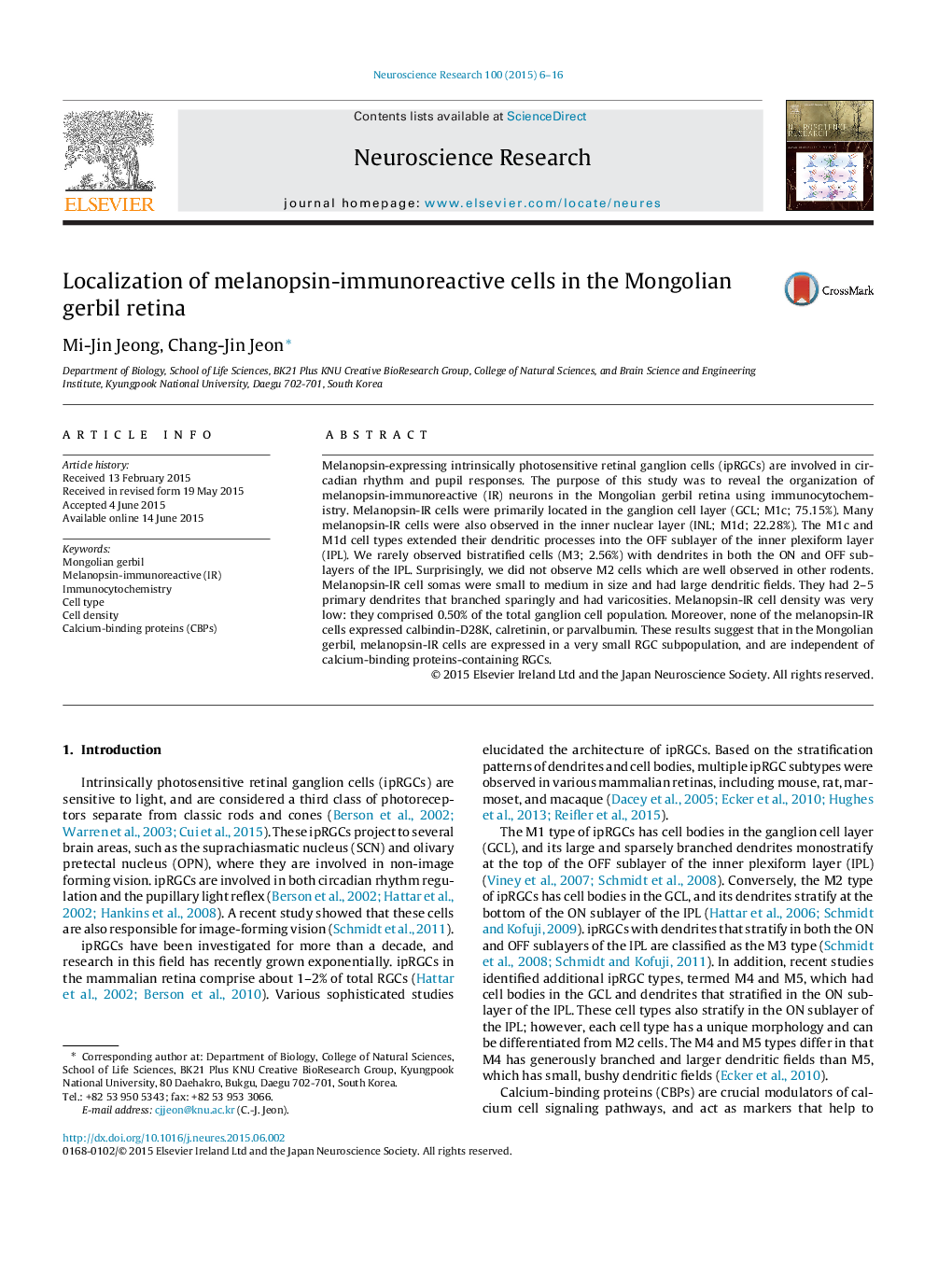| Article ID | Journal | Published Year | Pages | File Type |
|---|---|---|---|---|
| 6285960 | Neuroscience Research | 2015 | 11 Pages |
â¢Analysis of melanopsin-immunoreactive (IR) cells in the Mongolian gerbil retina.â¢M1 (97.43%) is the predominant type.â¢Mongolian gerbil retina does not contain M2 type which is observed in other rodents.â¢Melanopsin-IR cells are a minor subpopulation (0.50%) of retinal ganglion cell (RGC).â¢Melanopsin-IR cells are independent of calcium-binding proteins containing RGCs.
Melanopsin-expressing intrinsically photosensitive retinal ganglion cells (ipRGCs) are involved in circadian rhythm and pupil responses. The purpose of this study was to reveal the organization of melanopsin-immunoreactive (IR) neurons in the Mongolian gerbil retina using immunocytochemistry. Melanopsin-IR cells were primarily located in the ganglion cell layer (GCL; M1c; 75.15%). Many melanopsin-IR cells were also observed in the inner nuclear layer (INL; M1d; 22.28%). The M1c and M1d cell types extended their dendritic processes into the OFF sublayer of the inner plexiform layer (IPL). We rarely observed bistratified cells (M3; 2.56%) with dendrites in both the ON and OFF sublayers of the IPL. Surprisingly, we did not observe M2 cells which are well observed in other rodents. Melanopsin-IR cell somas were small to medium in size and had large dendritic fields. They had 2-5 primary dendrites that branched sparingly and had varicosities. Melanopsin-IR cell density was very low: they comprised 0.50% of the total ganglion cell population. Moreover, none of the melanopsin-IR cells expressed calbindin-D28K, calretinin, or parvalbumin. These results suggest that in the Mongolian gerbil, melanopsin-IR cells are expressed in a very small RGC subpopulation, and are independent of calcium-binding proteins-containing RGCs.
